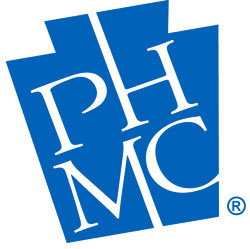We archaeological reviewers here at the PA SHPO have many jobs other than just reviewing Section 106 and State History Code submissions. Among our ‘other duties as assigned’, we are also responsible for helping the GIS Section ensure that the information from archaeological reports gets into the CRGIS (Cultural Resources Geographic Information System) for use by consultants, planners, and the public. Making sure all the data we receive at our office is curated correctly and that it is available online is a big job – one that you, as report writers and submitters, can help us do more efficiently.
We routinely see three common report submission issues when archaeological reports are submitted to our office. The first issue we want to highlight here is the inclusion of an incorrect ER (Environmental Review) number, or potentially the complete absence of the ER number with the project submission. The ER Number is the way our office tracks all projects. We are part of the government so you will likely not be surprised that we have a tracking system that relies heavily on a nice long string of numbers. Not including an ER number (if you have one) with any project submission is taking the chance your report review may be delayed, misdirected, and/or even lost. Unfortunately, bureaucratic black holes do exist and we want to help you avoid being sucked into one. Consequently, to avoid routing issues for your report submission, if an ER number has been assigned to the project, please include this on the report cover and where indicated on a Negative Survey or Record of Disturbance Form.
Many of you may have wondered over the years what exactly the ER number means. ER numbers are composed of four pieces of information. The first number is the federal fiscal year in which the project was first submitted to our office for review. The second number is the sequential number within a fiscal year for new submissions. The third number is the county code. This code includes odd numbers only from Adams (001) to York (133) – with the only exception to the rule being multi county projects (042). The alpha code that follows is an ascending submission code for each new submission for that project. For example, ER# 2013-0152-001-D was first received by our office in federal fiscal year 2013, was the 152nd project received by us for review that year, and is located in Adams county. The alpha code D indicates that it is the fourth submission to our office for that project. Since the alpha code changes for every submission it should not be included when you submit new correspondence or reports.
The second issue we commonly see in report submissions is incomplete forms (a bureaucrat’s worst nightmare!). The Negative Survey Form, the Record of Disturbance Form, and the Report Summary Form are all used by our office for data entry of survey information into the CRGIS. If the forms are not filled out completely and accurately, then either potentially incorrect information will be entered into the CRGIS database or we archaeological reviewers will have to spend extra time attempting to complete the forms/correcting mistakes. We think it is very important for you to know that time we spend correcting mistakes or completing incomplete forms is time we are not spending on the review of your other submissions. The most commonly blank or incorrect sections are: municipality, quad sheet name, watershed, and physiographic zone. All of this information is available to you through the CRGIS.
On a similar note, with increasing frequency, we are finding cover letters, Request to Initiate Consultation/Cultural Resource Notice forms, and BHP review letters bound to the front of final report copies. As our file space is limited, and as noted above we wish to spare our leafy friends their lives, please do not attach anything extra to the final report copies. Reports and correspondence/ consultation forms are archived in separate places within our files. As well, we already have a copy of back dated project correspondence and the initial project consultation forms in our files so additional copies are not needed. When this information is bound to reports, we will remove it and throw it away.
We hope this information is useful for easing your submissions through our process. Working together we can make sure the information that goes into our files and into the CRGIS is accurate and useful for future research.
Co-Authored by Steve McDougal and Kira Heinrich.
Comment Policy
PHMC welcomes and encourages topic-related comments on this blog. PHMC reserves the right to remove comments that in PHMC’s discretion do not follow participation guidelines.
Commenters and Comments shall be related to the blog post topic and respectful of others who use this site.
Commenters and Comments shall not: use language that is offensive, inflammatory or provocative (this includes, but is not limited to, using profanity, obscene, or vulgar comments); disparage other commenters or people; condone illegal activity; identify the location of known or suspected archeological sites; post personal information in comments such as addresses, phone numbers, e-mail addresses or other contact details, which may relate to you or other individuals; impersonate or falsely claim to represent a person or an organization; make any commercial endorsement or promotion of any product, service or publication.
If you would like to comment on other topics not related to this blog post but related to PHMC, please fill out the PHMC Contact Us Form.
